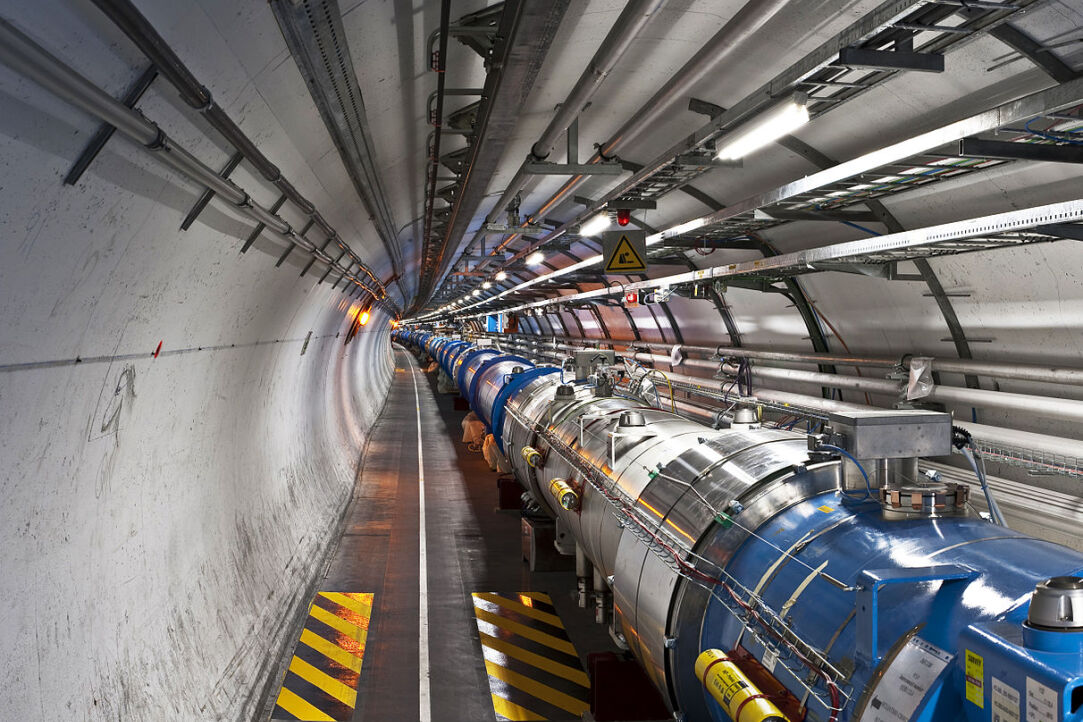-
Science
We explore, develop, and refine scientific methods for analysing large volumes of data, enabling us to obtain qualitatively new results for specific subject areas.
-
Education
We organise and conduct regular seminars, local and international summer schools, internships, forums, and supervise undergraduate and graduate theses, helping students take their first steps in their research.
-
Industry
We provide consulting and expertise, optimise production processes, and solve business problems, helping our partners remain market leaders.
Team
Partners
News
-

-

-

JINR and HSE University Launch Systemic Collaboration
March 29, 2024
-

Publications
-
Book
Artificial Intelligence for High Energy Physics
The Higgs boson discovery at the Large Hadron Collider in 2012 relied on boosted decision trees. Since then, high energy physics (HEP) has applied modern machine learning (ML) techniques to all stages of the data analysis pipeline, from raw data processing to statistical analysis. The unique requirements of HEP data analysis, the availability of high-quality simulators, the complexity of the data structures (which rarely are image-like), the control of uncertainties expected from scientific measurements, and the exabyte-scale datasets require the development of HEP-specific ML techniques. While these developments proceed at full speed along many paths, the nineteen reviews in this book offer a self-contained, pedagogical introduction to ML models' real-life applications in HEP, written by some of the foremost experts in their area.
World Scientific Publishing Co., 2022.
-
Article
Measurement of the W boson mass
The W boson mass is measured using proton-proton collision data at s√s = 13 TeV corresponding to an integrated luminosity of 1.7 fb−1 recorded during 2016 by the LHCb experiment. With a simultaneous fit of the muon q/pT distribution of a sample of W → μν decays and the ϕ* distribution of a sample of Z → μμ decays the W boson mass is determined to be
(formula)
where uncertainties correspond to contributions from statistical, experimental systematic, theoretical and parton distribution function sources. This is an average of results based on three recent global parton distribution function sets. The measurement agrees well with the prediction of the global electroweak fit and with previous measurements.
Journal of High Energy Physics. 2022. Vol. 2022. No. 01.
-
Article
Simulating the time projection chamber responses at the MPD detector using generative adversarial networks
High energy physics experiments rely heavily on the detailed detector simulation models in many tasks. Running these detailed models typically requires a notable amount of the computing time available to the experiments. In this work, we demonstrate a new approach to speed up the simulation of the Time Projection Chamber tracker of the MPD experiment at the NICA accelerator complex. Our method is based on a Generative Adversarial Network – a deep learning technique allowing for implicit estimation of the population distribution for a given set of objects. This approach lets us learn and then sample from the distribution of raw detector responses, conditioned on the parameters of the charged particle tracks. To evaluate the quality of the proposed model, we integrate a prototype into the MPD software stack and demonstrate that it produces high-quality events similar to the detailed simulator, with a speed-up of at least an order of magnitude. The prototype is trained on the responses from the inner part of the detector and, once expanded to the full detector, should be ready for use in physics tasks.
The European Physical Journal C - Particles and Fields. 2021. Vol. 81.
-
Article
NFAD: fixing anomaly detection using normalizing flows
Anomaly detection is a challenging task that frequently arises in practically all areas of industry and science, from fraud detection and data quality monitoring to finding rare cases of diseases and searching for new physics. Most of the conventional approaches to anomaly detection, such as one-class SVM and Robust Auto-Encoder, are one-class classification methods, i.e., focus on separating normal data from the rest of the space. Such methods are based on the assumption of separability of normal and anomalous classes, and subsequently do not take into account any available samples of anomalies. Nonetheless, in practical settings, some anomalous samples are often available; however, usually in amounts far lower than required for a balanced classification task, and the separability assumption might not always hold. This leads to an important task—incorporating known anomalous samples into training procedures of anomaly detection models. In this work, we propose a novel model-agnostic training procedure to address this task. We reformulate one-class classification as a binary classification problem with normal data being distinguished from pseudo-anomalous samples. The pseudo-anomalous samples are drawn from low-density regions of a normalizing flow model by feeding tails of the latent distribution into the model. Such an approach allows to easily include known anomalies into the training process of an arbitrary classifier. We demonstrate that our approach shows comparable performance on one-class problems, and, most importantly, achieves comparable or superior results on tasks with variable amounts of known anomalies.
PeerJ Computer Science. 2021. Vol. 7.
-
Article
Generalization of change-point detection in time series data based on direct density ratio estimation
The goal of the change-point detection is to discover changes of time series distribution. One of the state of the art approaches of change-point detection is based on direct density ratio estimation. In this work, we show how existing algorithms can be generalized using various binary classification and regression models. In particular, we show that the Gradient Boosting over Decision Trees and Neural Networks can be used for this purpose. The algorithms are tested on several synthetic and real-world datasets. The results show that the proposed methods outperform classical RuLSIF algorithm. Discussion of cases where the proposed algorithms have advantages over existing methods is also provided.
Journal of Computational Science. 2021. No. 53.
Contacts
S-924, 11 Pokrovsky Boulevard, Moscow, 109028, Russia





